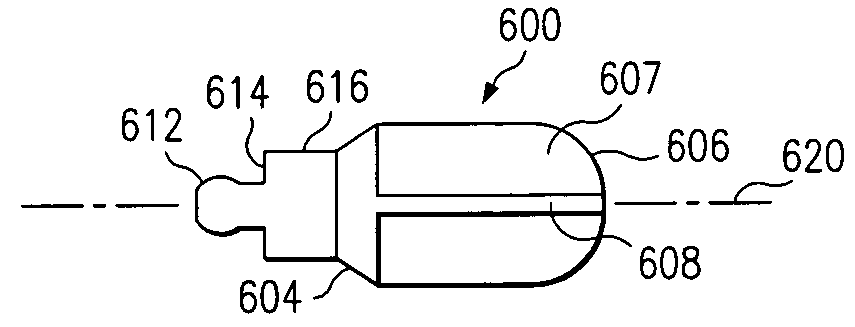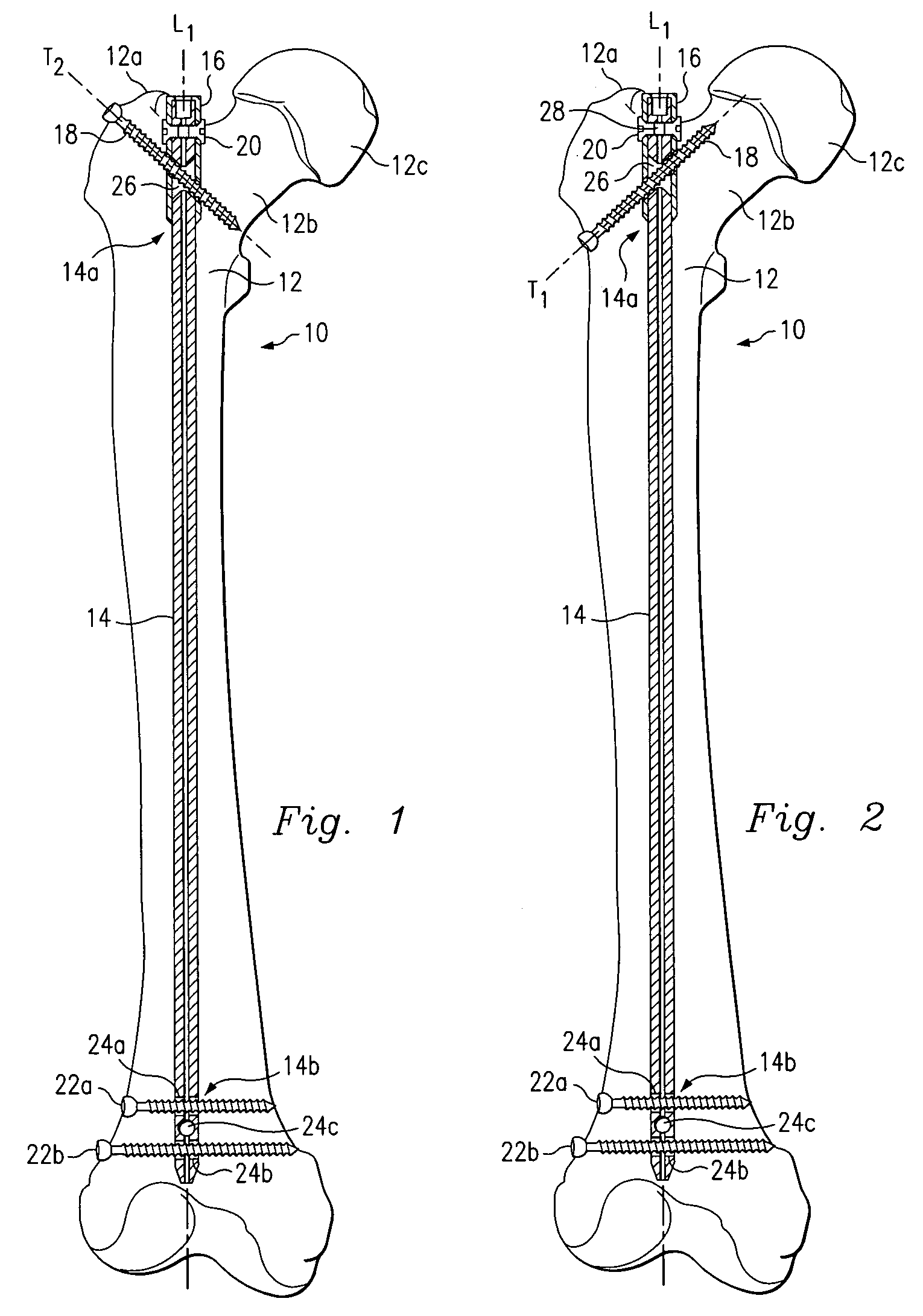Overall, the
femur is one of the longest and strongest bones in the
human body; however, portions of the
femur are extremely susceptible to fracture.
Any longitudinal, transverse, or rotational movement of one section of the
fractured bone relative to the other can cause substantial
delay in
healing time or cause improper healing to occur.
However, such an arrangement injures the
flesh and
muscle surrounding the bones and a large number of pins driven through the bone tend to weaken its hard outer layer.
Plates also tend to stress the bone and are not always able to bear sufficient stress for many
femoral fracture applications.
Further, bone beneath the plate does not always become as strong as it would in the absence of the plate.
While there have been a number of technological advances made within the area of intramedullary fixation of femoral fractures, several problem areas remain.
One such problem arises from the fact that most intramedullary fixation systems currently available are adapted to a specific type of
femoral fracture, resulting in a large number of highly specialized configurations.
This has led to the disadvantageous consequence that hospitals and trauma centers have to keep a large inventory of incremental nail lengths with varying configurations and ancillary parts in order to accommodate a random and diverse incoming
patient population.
Maintaining such a high level of inventory to
handle all expected contingencies is not only complex, but is also very expensive.
Correspondingly, the possibility of error during selection and implantation of the fixation device by the surgeon is elevated.
Likewise, the inventory costs associated with varying methods of intramedullary fixation are drastically increased and, in the case of smaller medical facilities, may necessitate switching to a less costly and potentially less
effective method of treating femoral fractures.
Another problem may result from intramedullary rod systems used to specifically treat fractures of the neck or head of the femur.
Unfortunately, this structural connection does not always prevent rotational or translational movement of the fixation member relative to the intramedullary rod in response to forces commonly resulting from the normal activity of a convalescing patient.
Additionally, the intramedullary rods used in these devices are typically specialized for use with this single fixation application and can not be used in other applications.
Therefore, the costs associated with maintaining increased levels of inventory are substantially increased.
Furthermore, if it is desired to vary the angle of the fixation member relative to the rod, substantial modifications must typically be made to either the fixation member or the rod member to accommodate for such an
angular variation, again driving up inventory levels and associated inventory costs.
In still another problem area, on occasion, it is necessary to use transverse locking
bone screws to lock the rod into position relative to the femur.
Unfortunately, the installation of locking nuts onto the ends of the locking screws requires additional surgical incisions and commonly causes
soft tissue irritation.
In yet another problem area, when an intramedullary rod is inserted into the medullary canal and anchored to the femur by two or more
bone screws, despite the best efforts of the surgeon, the
fracture site may have either been over-compressed or over-distracted as a result of the
insertion of the rod.
Unfortunately, with conventional intramedullary rods, it is virtually impossible to adjust the amount of
distraction or compression without first removing one or more of the
bone screws and manually distracting or compressing the
fracture site.
 Login to View More
Login to View More  Login to View More
Login to View More 


